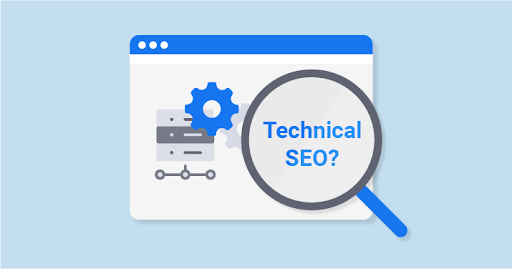New Google Ads Brand Report
Google has quietly introduced a powerful tool for advertisers: the
Read More
Technical SEO is definitely not going to help you in the courtroom. But it can place more clients in your office, who will later be represented in that very same courtroom. Knowing why technical SEO is important can increase client conversion rates, which means you may begin to learn exactly how new business is landing at your virtual, and then physical, doors.
When it comes to your attorney website, each component on your page, from images to navigation and copy to videos should be unique. And not just unique to your site from all other law firms. The web pages on your site should be unique from all the other pages on your website.
The overall purpose of your website is to provide a unique value to the user. Your attorney website pages, from the home page and practice area pages to the supporting pages and blog, should offer a sincere value that allows prospective clients, information seekers, and common searchers to get the information they need.
For instance, let’s say your website includes a practice area page for corporate law that connects to three supporting pages, including:
The information contained on these pages may not be different enough from each other to provide value – especially if any of the content repeats, including a rewritten version or image that exists on the main corporate law page.
In order to add value to the website and to the searching process, it is important to combine the pages to create a fully-informed and purposeful resource for the individual who is seeking legal counsel.
From a technical SEO for Lawyer’s standpoint, you must then block the search engines from accessing the old pages, so the new, improved page is indexed properly by Google.

Much like a lawyer’s website content must be uniquely valuable, so must the technical side of the design. The importance of technical SEO is two-fold: For Google’s benefit and the user’s positive experience.
First, for Google’s benefit, all webpages should be accessible to search engine crawlers. These crawlers are what allow your site and its content to be found by the search engine.
Second, the webpages should load as quickly as possible. Speedy results allow Google to crawl your website faster and more frequently, which means you are returned in the search engine results pages more often than slower lawyers’ pages. The second benefit of fast load times is that the user, the actual searcher, enjoys your website’s interaction.
When users enjoy their experience, they are more likely to continue their site navigation, share links, and avoid the negative pitfalls that result in searching for another attorney.
Third, your lawyer website should be fully parsed in every text browser. No matter which browser your prospective clients are using, there is always a chance that someone is using an unsophisticated or outdated version.
This means it may not do an exceptional job of reading any or all of the built-in content, including Flash, JavaScript, or other post-loading scripts. The search engine crawlers should be able to visit and fully read the technical side of each page that you want to present on your attorney website in text form.
The reliable way to ensure your law firm’s website is being read clearly by the search engine crawlers is to load everything related to each of your webpages in HTML in text. At AMN, we develop each attorney website in HTML 5, which provides the most recent and necessary technology for crawlers to find your website, so clients enjoy using your website and browsers understand each component on the site.

Building a website that ranks on the search engine results pages starts with its security certificate. When you are searching a website, take note of the initial address, and whether it is HTTPS or HTTP. The latter is a non-secure version that can place your users at risk for security issues.
What’s more important is that Google reward pages that use HTTPS, and penalize those that do not.
At AMN, we use WordPress to design, build, and develop our websites, which delivers a uniquely secure final product and hosting at all times.
Knowing what to include on your attorney website, and where it is placed for technical SEO importance, is just as vital as knowing what to eliminate from your website.
To ensure technical SEO success, it is important to exclude:
Thin content is any type of attorney website content that does not provide meaningful use or differentiated value. In our previous example, corporate law, having three different pages on the same topic does not provide value to the reader – or the search engines – that cannot be gained when they are combined.
Duplicate content is exactly like it sounds: The same content on more than one webpage.
Crawling Traps or Infinite Loops cause web crawlers to get stuck in a loop, which means they are loading pages that add zero value to your website.
Also referred to as “junk pages,” these can include:
The technical SEO importance here is that the behind-the-scenes language should tell the search engines: This is the original version of this page, and it is the only one you should return to searchers.

Pages with valuable content are accessible through shallow, thorough internal link structures, which means everything on your lawyer website should be accessible in just a few clicks.
Since most attorney websites are comprised of dozens of pages and not hundreds, each different page, from practice areas to your contact page, should be no more than three or four clicks away.
Visitors should not have to go to your blog to access a practice area page that does not appear in the main menu, nor should they have to click from page to page to find valuable information.
If you find your site to be confusing, or if you are noticing erratic movements in visitor usage when reviewing your metrics, it may be time to audit your attorney website’s architectural and navigational structure.
Part of your attorney website’s architectural structure is cemented in the domain and its subfolders. Let’s say your website’s domain is mylawoffice.com.
You want subfolders to lead the searcher through the online experience, meaning:
You do not want subdomains that lead your searcher to a completely new site, meaning:
But, why?
In our experience, lawyers who have moved from a subdomain to a subfolder saw their rankings increase quickly and exponentially.
In real-time terms, it is typically the result of using subfolders that are working properly all the time. Subdomains have many moving parts that they are practically begging for errors to occur, which will immediately turn the searcher in a new direction – away from your firm.
Google not only prefers subfolders to subdomains, as listed in the previous example but also clearly defined folders, instead of hyphenated URLs.
Using the previous example, Google prefers:
Instead of:
But, why?
Google crawls and analyzes websites more efficiently when a good folder structure exists. They also reward websites with clean structures handsomely as a result.
The other benefit is that the multiple pages listed within the folder structure are easier to find and access by both Google and the user.

Google considers mobile friendliness in its ranking system, which means you will need all of your webpages to load quickly, cleanly, and clearly on any device.
At the Attorney Marketing Network, we use mobile-first design and work backward to desktop and laptop efficiency. This means our websites are optimized for 4G first, and then they are equally enhanced for 3G, 2G, and no G. Why? Because more than half of U.S. residents use their smartphones as their primary search engine device.

There may be times that segments of your website must move somewhere else to react optimally to searches. When they do move, there are five acceptable actions and status codes that can be reported.
Anything outside of these five status codes should be avoided, and at the Attorney Marketing Network, our crawlers tell us: “Hey, this looks problematic to us. You should probably do something about this.” This keeps your website operating optimally at all times, providing a positive user experience from any device, any time.
A “breadcrumb” is a secondary navigation scheme.
Breadcrumbs are helpful for websites will a lot of content and web pages, and reduces the number of actions a website visitor needs to take in order to get to a higher-level page. and they improve the findability of website sections and pages. They also reveal the user’s location in an app or website.
When your website uses breadcrumbs, Google will provide the added benefit of showing your URL in a friendly way, especially on mobile devices.
Technical SEO for lawyers is an integral part of your website’s success. At the Attorney Marketing Network, we can help your law firm understand the behind the scenes technology, simply. The more you know about your technical marketing efforts, the more you can recognize the value of your budget. We’ll walk you through the process.